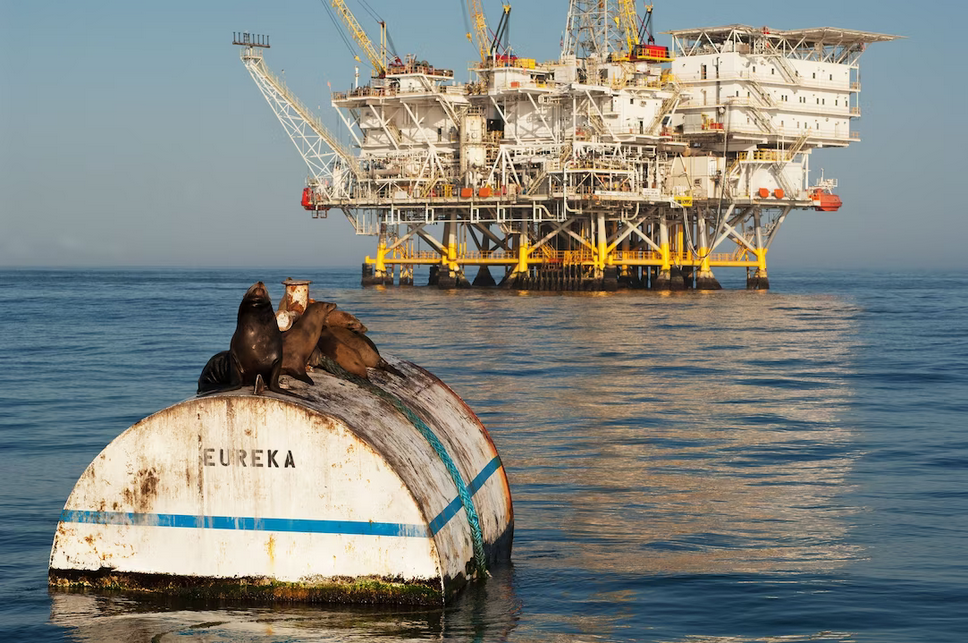In 1984, the Eureka oil platform was installed in the Pacific Ocean near Southern California. Surprisingly, this massive structure became a home for a variety of sea creatures, with vibrant sea life covering its industrial beams and mussels creating a complex habitat for crustaceans.

Currently, cormorants are diving into the water, while numerous sea lions are also swimming down from the structures above, effortlessly moving through the abundant fish that are present beneath them.
The Eureka rig is reaching the end of its lifespan and its production has decreased. However, there is a debate about whether removing the platform would harm the numerous animals that have made it their home. This is because the rig has a significant amount of marine life and its platform habitat is even more productive than certain natural reefs. The rig currently sustains a flourishing ecosystem.

The platforms’ abundance is due to both its location as well as its idiosyncratic design. Unlike other platforms, Eureka’s shape provides places for marine life to hide and allows for a constant flow of cold currents that attract more species.
Unlike most rigs that use vertical cylindrical pilings, Eureka utilizes multiple layers of flat skirt pilings that mimic the different levels of the ocean floor. It is believed that the majority of the fish near the platform were carried there by ocean currents when they were young and needed a solid surface to cling onto.

Close to the surface, where photosynthesis is abundant, the young fish can eat plankton. Additionally, they can find crustaceans and arthropods living near the anemones on the pilings. Deepwater corals extend off the pilings like branching trees, and shoals of striped rockfish that make up roughly 90 percent of the species of fish associated with the platform’s habitat.
Full decommissioning is an expensive process that involves plugging wells and removing the entire structure. However, some oil companies are choosing partial decommissioning, which only involves removing the top section of the rig to a certain depth to ensure safety for ships.

The lower part of the area will be preserved for marine life as per the Rigs-to-Reef program by the US Department of Interior, and it will also be open for recreational activities like diving and fishing.
The outcome of Eureka’s environmental research could potentially influence the development of new energy infrastructure, including offshore wind, as it sets a precedent for other structures.
Reference- National Geographic, Inside Science, New Atlas, Journal Proceedings of the National Academy of Sciences, Wikipedia






